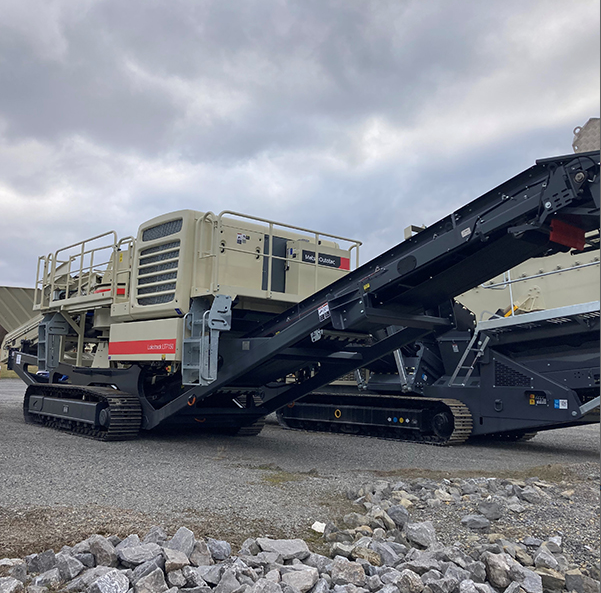It is essential for construction managers to optimize their crushing equipment layout in order to maximize efficiency, safety, and cost-effectiveness. As the layout configuration of a crushing unit can be complex, it is important to consider the size of the space available on the job site, special requirements related to the type of material being crushed, and the settings and screens being used in the operation.
Benefits of Optimizing Your Crushing Equipment Layout
Improve Efficiency
From an efficiency standpoint, optimizing a crushing equipment layout can help reduce operational costs by eliminating unnecessary steps or activities. By using modern technology such as automated systems or computer-aided design (CAD) programs, construction managers can more easily design layouts that are tailored specifically to their needs. Also, ensuring that the crusher and screens you are utilizing are being employed in a guided, strategic manner based on their design value is crucial for improved efficiency.
Improve Safety
When it comes to safety, proper layout optimization helps reduce potential hazards and creates a safe working environment for all employees. The correct positioning of parts such as conveyor belts and crushers means that workers are operating the machinery efficiently and confidently.
Increase Cost-Effectiveness
Importantly, proper equipment layout optimization allows for more cost-effective production cycles due to the efficient movement and usage of the materials. Workers will not have to spend extra time walking between locations or lifting heavy objects manually which could otherwise result in costly delays. Not only that, but machinery will also operate more efficiently and in accordance with its intended usage. Overall, optimized layouts save money by reducing labor time and optimizing energy consumption throughout daily operations.
The Importance of Considering Layout for Screening Equipment in Construction
Well-planned screening equipment layouts reduce operational costs by eliminating unnecessary steps and redundancies in your processes. They also are able to optimize layouts to allow for more energy-efficient production cycles due to improved airflow coming from grouping processes into separate areas.
Considering your layout efficiency will also help to minimize noise pollution, improve the longevity of your machinery, and also help you to get more precise and successful results from your efforts.
Tips on How To Improve Jaw Crusher Efficiency
Improving the efficiency of a jaw crusher is paramount if you’re looking to maximize your productivity and profitability. Here are some tips for achieving this goal:
- Pre-feeds: Adding pre-feeding systems, such as rock shelves or apron feeders, help ensure that the material reaches the crusher evenly and continuously which can increase overall production capacity.
- Improved Equipment Layout: Optimizing the layout of your crushing station can improve its performance significantly by ensuring all components are easily accessed and operated without having to move around too much or perform too many steps. Separating processes into smaller areas with good airflow can also help with ventilation while minimizing noise pollution coming from machines like vibrating screens.
Also, be sure that all components, such as the crusher, vibrating screen, conveyors, and others are easily accessed in order to reduce time-consuming activities like repositioning machines or performing maintenance.
Furthermore, it’s important to arrange machinery in such a way that it doesn’t interfere with other equipment as this could impact its performance significantly. You should also consider any potential obstacles placed between pieces of equipment that could block the material flow or cause unnecessary delays in processing.
- Setting Proper Reduction Ratio: Selecting the right reduction ratio is key when trying to optimize jaw crusher efficiency as it determines how often the material will need processing before reaching target sizes. It should be adjusted according to how materials are being used in production and what kind of products need to be produced to get the maximum output without wasting energy or time.
The process of determining the correct reduction ratio can be broken down into three simple steps:
- Determine the type of material being processed.
- Establish what size product is desired.
- Do a dynamic calculation to determine the proper reduction ratio.
By considering these tips, construction managers can save time, reduce energy costs, maintain safety at job sites, and, most importantly, improve their overall productivity.
Improving Efficiency and Cost-Effectiveness With Mellott
It is important for construction managers to optimize their crushing equipment layouts to ensure maximum efficiency, safety, and cost-effectiveness at the job site. Whether you are using jaw, gyratory, or cone crushers, it is crucial to consider how to best optimize the feeding and setting aspects of the process to get the best results.
With the right tools and strategies, construction managers can create effective layouts that meet all their specific requirements while still maintaining a tight budget. For more information on how you can optimize your unique processes, reach out to our team of experts today.

